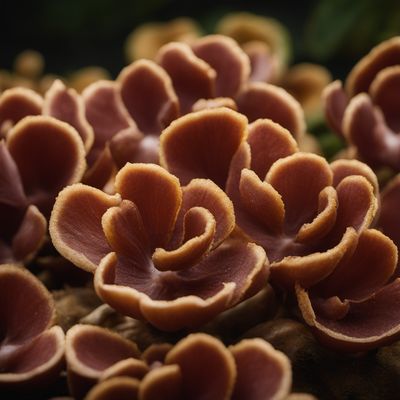
Ingredient
Fusarium venenatum
The Fungal Protein: Fusarium Venenatum
Fusarium venenatum is a type of filamentous fungus that is cultivated for its protein-rich biomass. It has a mild, nutty flavor and a firm, meat-like texture. This fungal protein is commonly used as a plant-based meat substitute in various dishes, providing a sustainable and nutritious option for individuals following a vegetarian or vegan diet.
Origins and history
Fusarium venenatum was first discovered in the 1960s and has since gained recognition as a valuable source of protein. It is primarily cultivated in controlled environments, where the fungus is grown on a substrate rich in carbohydrates. Fusarium venenatum offers a sustainable protein alternative and has the potential to address the environmental concerns associated with traditional meat production.
Nutritional information
Fusarium venenatum is a rich source of protein, containing essential amino acids, vitamins, and minerals. It is low in fat and cholesterol-free, making it a healthy choice for individuals looking to reduce their meat consumption.
Allergens
There are no known allergens associated with Fusarium venenatum.
How to select
When selecting Fusarium venenatum products, look for reputable brands that prioritize quality and sustainability. Check the ingredient list to ensure that it is made from pure Fusarium venenatum without any additives or preservatives. Additionally, consider the production methods and certifications to ensure ethical and environmentally friendly practices.
Storage recommendations
To maintain the freshness and quality of Fusarium venenatum products, store them in a cool, dry place away from direct sunlight. Follow the storage instructions provided by the manufacturer to ensure optimal shelf life. Once opened, reseal the packaging tightly or transfer the product to an airtight container to prevent moisture absorption and maintain its texture.
How to produce
Fusarium venenatum is typically produced in controlled environments using specialized cultivation techniques. It requires specific conditions, including temperature, humidity, and nutrient-rich substrates, to thrive. Due to the complexity of its production, it is best left to professional cultivators or manufacturers.
Preparation tips
Fusarium venenatum can be used as a plant-based meat substitute in various dishes, including burgers, sausages, meatballs, and stir-fries. It can be cooked using similar techniques as traditional meat, such as grilling, baking, or pan-frying. Experiment with different seasonings and marinades to enhance its flavor and create delicious plant-based meals.
Culinary uses
Fusarium venenatum is commonly used as a plant-based meat substitute in vegetarian and vegan dishes. It provides a sustainable protein option and can be incorporated into various recipes, offering a unique texture and flavor. It is particularly popular among individuals looking to reduce their meat consumption or follow a plant-based diet.
Availability
Fusarium venenatum products are commonly available in health food stores, specialty supermarkets, and online retailers.
More ingredients from this category » Browse all

Pleurotus
The Versatile Oyster Mushroom

Jew's ears
Nature's Edible Fungi: Unveiling the Secrets of Jew's Ears

Corn smuts
The Mysterious Corn Fungus

Horse mushrooms
The Majestic Fungi of the Earth

Shimeji
The Delicate Mushroom: Shimeji

Shiitake
The Mighty Shiitake

Paddy straw mushroom
The Golden Fungi

Snow mushrooms
The Delicate Beauties of the Forest

Pom-pom blancs
The Delicate Delight: Exploring the World of Pom-pom Blancs

Common mushrooms
The Versatile Fungi

Wood blewits
The Enigmatic Wood Blewits: A Hidden Gem in the Culinary World

Enokitake
The Delicate Beauty of Enokitake Mushrooms